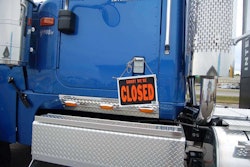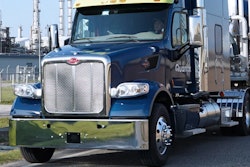Some fleets believe that you have to spend a lot of money to achieve great fuel economy. They are both right and wrong.
When it comes to achieving great fuel economy, spending time investigating options is as important as spending money; and when you do invest in fuel-saving technology it does not necessarily mean that you need to spend a lot of money.
It’s important to remember that every fuel-saving technology is not right for every fleet. Before considering a technology, make sure you have a thorough understanding of the various duty cycles in which you operate.
The next step is to begin looking at some of the technologies currently on the market. There are a number of things you can look at: aerodynamic devices for the tractor, aerodynamic devices for the trailer, idle reduction technologies and tires and tire pressure systems, for example.
In addition to reviewing material from the manufacturers of these technologies, look for unbiased information on how a technology performed in an actual fleet operation. While wind tunnel and computer modeling are of some use, what you really need is data that shows how a device performs under real-world operating conditions.
If you don’t have a big budget, start with some items that cost little to no money. Adjusting electronic engine parameters for fuel economy only takes time. Vented mudflaps and wheel covers are examples of smaller investments that result in fuel savings.
Then, of course, there are things like chassis skirts, fairings, rear trailer devices, diesel APUs, battery HVAC systems and others that will require some investment, but also have a bigger impact in improving fuel economy.
One important thing to remember when evaluating a technology of any kind – but especially one that improves fuel economy – is to look past the initial purchase price. You need to look at the total cost of operation: how much will that device save you in fuel over the life of the asset compared to what you are paying for it?
In these days of $5-plus for a gallon diesel, even a tenth of a mile more from per gallon can result in big bottom line savings.
When it comes to saving fuel, do a little homework and then make smart investments which can lead to big savings over the life of your vehicle.











